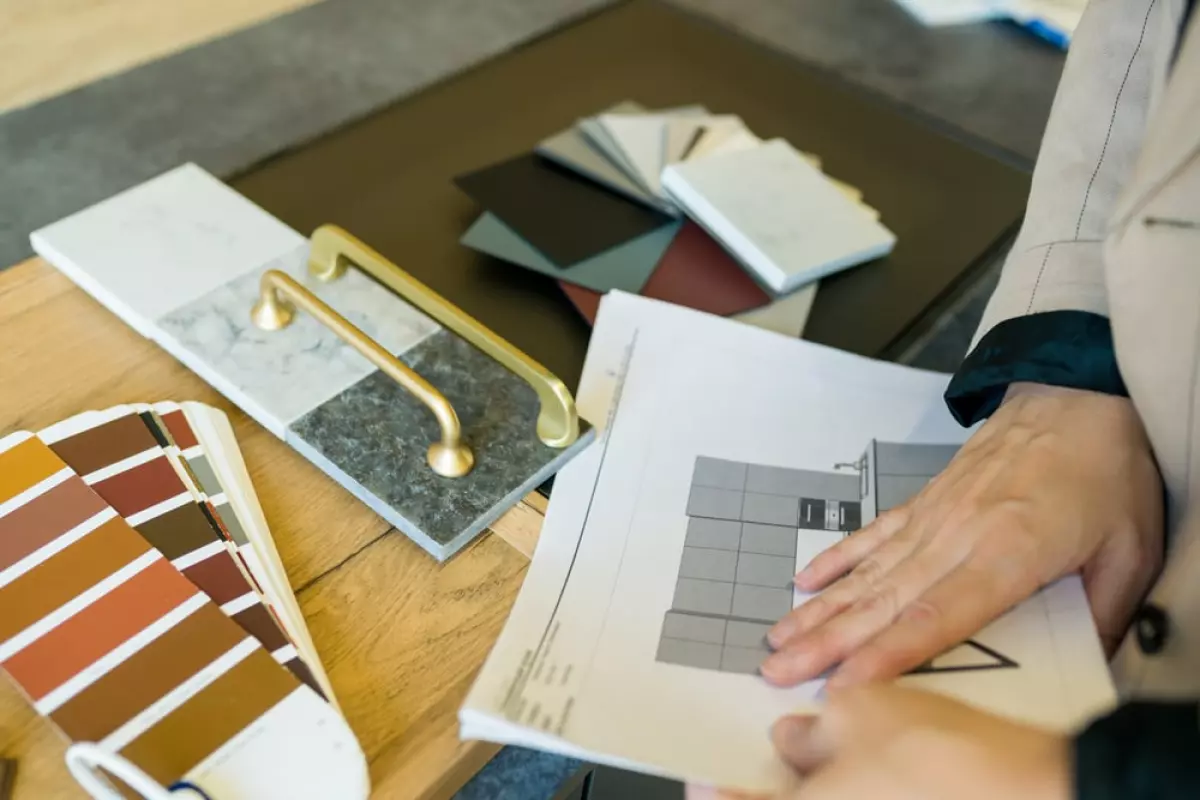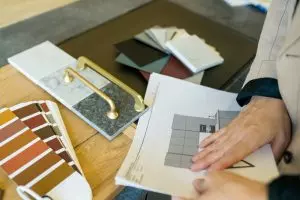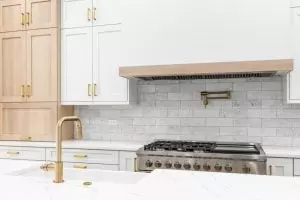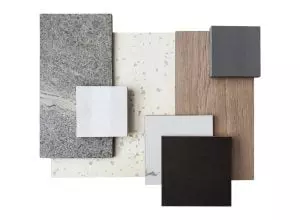
Modular kitchens have become a popular choice for homeowners due to their sleek design, functionality, and cost-effectiveness. These kitchens are not only practical but also stunningly beautiful, making them a must-have for anyone looking to upgrade their home interiors. If you're considering a modular kitchen but don't know where to start, don't worry! We've got you covered with this ultimate guide to selecting the best modular kitchen cabinets and hardware for your space.
Find the Perfect Match for your Modular Kitchen
Whether you're updating your kitchen or starting from scratch, a modular kitchen is the trendy choice to make. To achieve a cohesive look, it's important to match the style and feel of your kitchen to the rest of your home's interior, whether it's classical, transitional, or contemporary.

When making interior decisions for your kitchen, material selection is crucial. The materials you choose will not only transform the look of your space but also impact its durability and functionality. To help you make the best choices, here's some expert advice on selecting cabinets and hardware that complement each other and meet your needs.
Modular Kitchen Cabinet Materials

Your kitchen will face high temperatures, humidity, stains, spills, and rough handling. Therefore, it's important to choose sturdy materials for your cabinet cores that can withstand these stressors and stand the test of time. Here are some of the most common modular kitchen cabinet materials and their pros and cons:
MDF or Medium Density Fibreboard
MDF is an engineered wood made by compressing wood residuals and binders under high temperatures and pressures. It's stronger than particle board but less sturdy than plywood or real wood.
- Pros: Affordable, smooth finish, resistant to warping, easy to work with.
- Cons: Not water-resistant, edges must be sealed well for durability.
Plywood
Plywood is made by gluing thin layers of wood together, with adjacent layers' grains at 90 degrees to each other. Marine plywood is the best choice for kitchens and bathrooms as it's boiling waterproof and resistant to warping. Commercial plywood is suitable for bedrooms and living rooms.
- Pros: Strong, resistant to moisture, less prone to warping than MDF, can be bent without breaking.
- Cons: Costlier than MDF, outer layers may splinter.
Particle board or Chipboard
Particle board is the most cost-effective option, made from wood chips and binders or resins. It's available in different grades, with higher densities being stronger.
- Pros: Inexpensive, smooth finish, very easy to work with.
- Cons: Prone to damage from moisture, not as durable as plywood or solid wood, requires sealing and finishing to protect from moisture.
Modular Kitchen Countertop Materials
When choosing countertop materials for your kitchen, there are a few important considerations to keep in mind:
- Your countertop should be non-porous, resistant to stains and spills, and easy to clean.
- It should withstand heat and not be easily burned or damaged.
- Some stones may require periodic sealing, while others are low-maintenance.
- Consider your budget, décor theme, and color palette.

Here are some common countertop materials and their features:
Granite
Granite is a widely available natural stone known for its durability and resistance to scratches. It's a popular choice for kitchen countertops.
- Pros: Durable, cost-effective, heat-resistant, wide variety.
- Cons: None.
Quartz
Quartz is an engineered stone that combines beauty with practicality. It offers a non-porous surface that is resistant to stains and scratches, with minimal maintenance required.
- Pros: Low maintenance, non-porous, wide variety of colors and patterns.
- Cons: Can be costly, not completely heat-resistant.
Marble
Marble is a high-gloss, luxurious stone that adds sophistication to your kitchen. It requires regular maintenance to preserve its appearance.
- Pros: Elegant appearance, unique veining, heat-resistant.
- Cons: Porous, requires sealing, susceptible to stains and scratches.
Solid Surface (e.g., Corian)
Solid surfaces like Corian offer a seamless countertop option. They are made of acrylic resin, stain-proof, and come in a variety of colors and patterns.
- Pros: Seamless appearance, repairable, variety of colors and patterns.
- Cons: Expensive, prone to scratching and scorching, less heat-resistant than stone.
Modular Kitchen Door Materials

Cabinet doors are commonly made of particle board or MDF, which are lightweight and easy to handle. The finishes, such as laminate, acrylic, or membrane, should complement your décor and aesthetic. Glass-fronted doors with aluminum frames create transparency and openness, while aluminum rolling doors offer a modern, space-saving solution.
No matter the material you choose for cabinet doors, make sure the edges are well-sealed and finished to ensure durability and water resistance. Proper sealing prevents moisture infiltration, minimizing the risk of warping, swelling, or other damage over time.
Modular Kitchen Hardware Materials
The hardware you choose plays a crucial role in the functionality and aesthetics of your kitchen. Consider the specific function, décor theme, and budget when selecting hardware materials such as stainless steel, chrome, brass, aluminum, wood, or ceramic.

- Hinges: Basic elements that enable smooth opening and closing of cabinet doors. They are commonly made of stainless steel, brass, or zinc alloy. Soft-close hinges slow down the closing action, adding convenience and reducing wear and tear.
- Lift-Ups: Provide easy access to overhead storage spaces without obstructing the workspace. They use pneumatic or mechanical assistance to lift the cabinet door, offering a hands-free solution.
- Heavy Duty Channels: Bear the weight of drawers used for large utensils. They enable smooth sliding, even when heavily loaded. Soft-close heavy-duty channels reduce noise and extend the lifespan of the drawer mechanism.
- Handles: Add a finishing touch to your kitchen cabinets and drawers. They come in various materials, styles, and finishes, offering aesthetics and functionality. Handle-less, push-to-open options create a sleek and streamlined look.
Modular Kitchen Finish Selection Guide

The look of your kitchen depends on the cabinet finishes. Whether you prefer the high-end aesthetic of acrylic, the modern vibe of laminate, or the durability of PU and membrane finishes, each choice adds its own style. Consider factors like longevity, maintenance, and aesthetics to ensure your chosen finish enhances your kitchen's style and lasting appeal.
Modular Kitchen Finish Options

Here are the most popular modular kitchen finishes:
Laminate
Laminate doors are budget-friendly and come in a wide range of colors, textures, and patterns. They are durable, resistant to stains, and easy to clean, making them the practical choice for busy kitchens.
PU Finish
Polyurethane (PU) finishes offer a luxurious look with a smooth, glossy appearance. They are known for their durability and are applied as a liquid spray for a seamless finish.
Membrane
Membrane finishes involve wrapping a PVC foil or membrane around MDF or particle board. They come in vibrant colors, patterns, and textures, but are relatively more expensive.
Acrylic
Acrylic finishes provide a high-gloss appearance and elegant designs. They are easy to clean but may show fingerprints and scratches more prominently, requiring high maintenance.
Let's Get Started on Crafting Your Dream Kitchen!

Ready to bring your dream kitchen to life? At HomeLane, we understand the importance of a well-designed kitchen. Our experts can turn your vision into a stunning reality using the best materials and finishes. Contact us today to start creating your dream kitchen space!

















